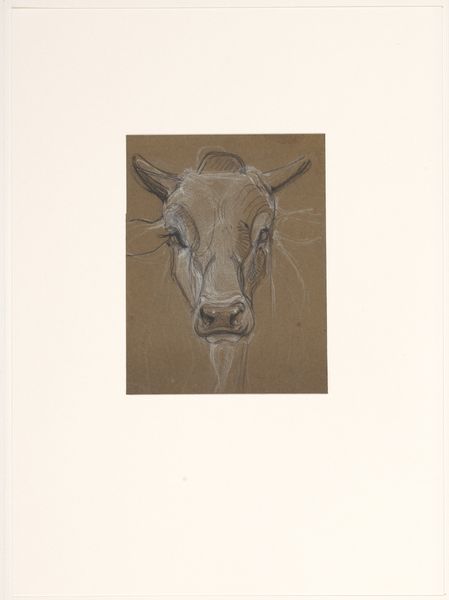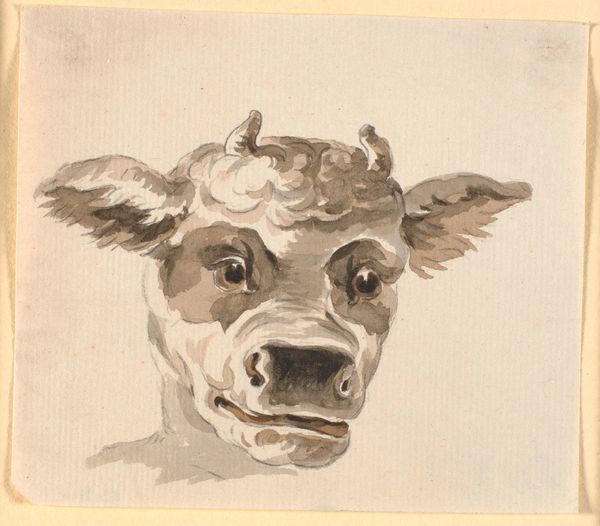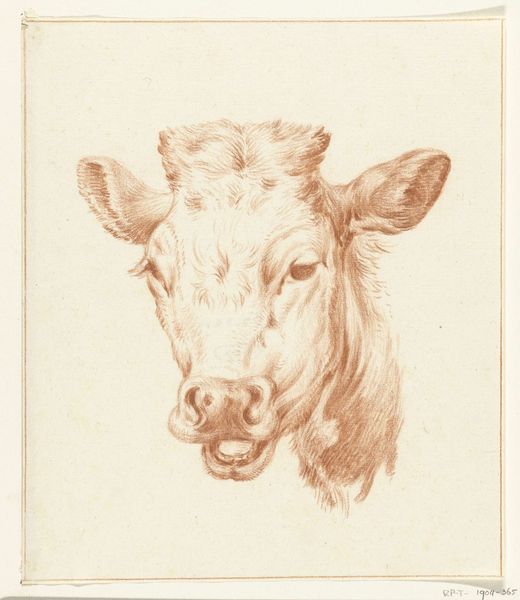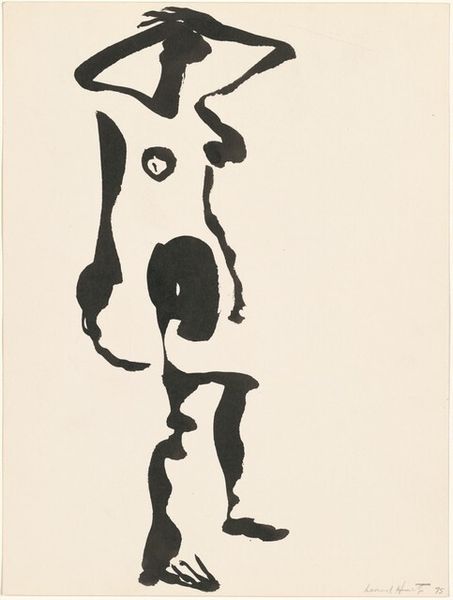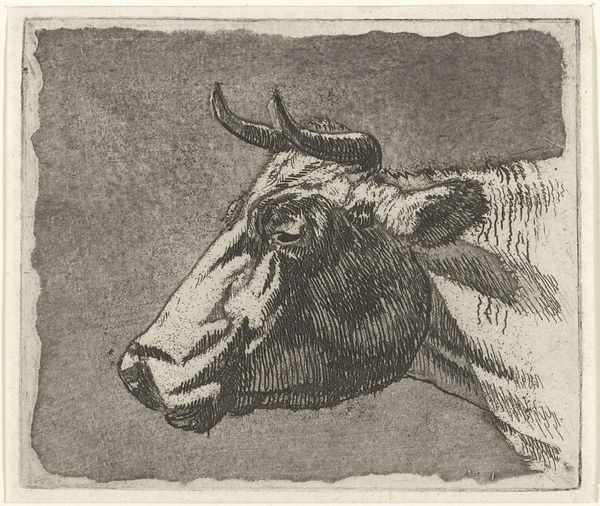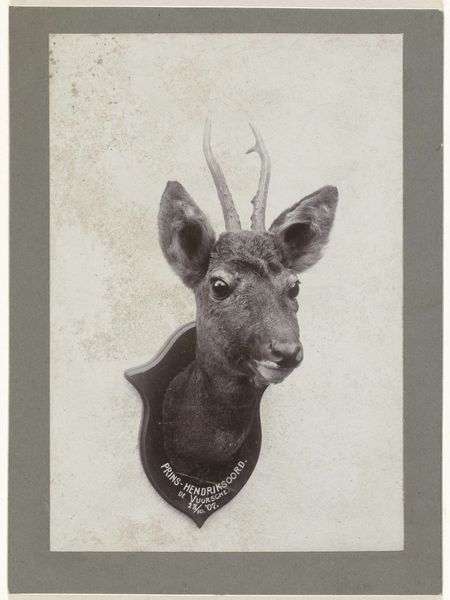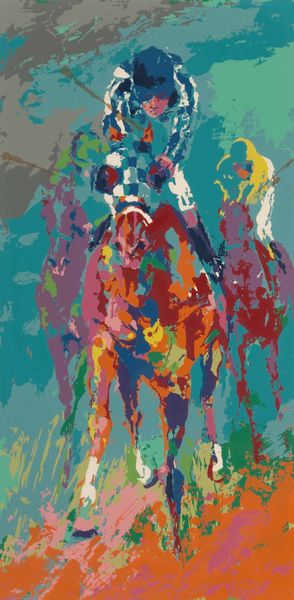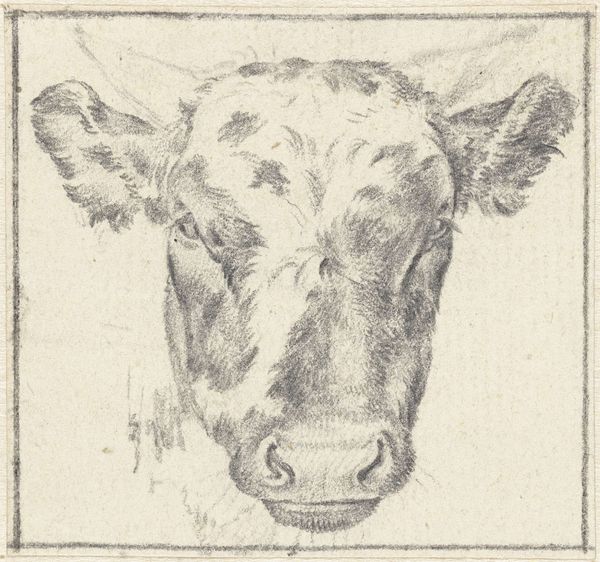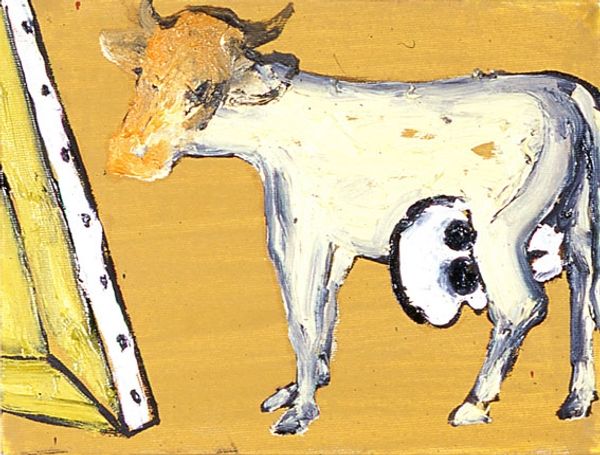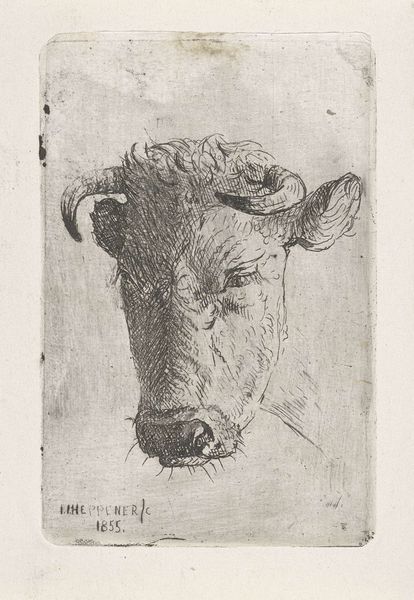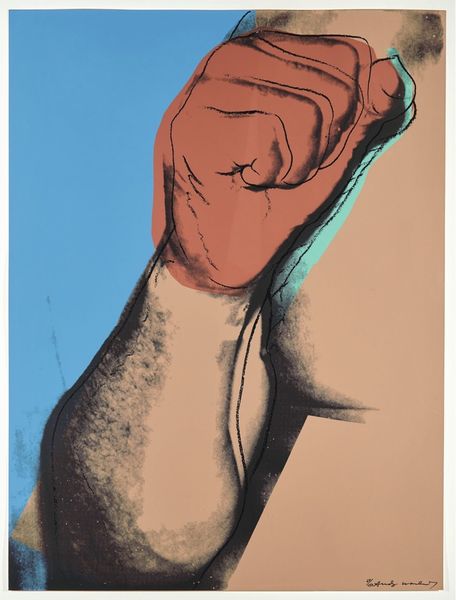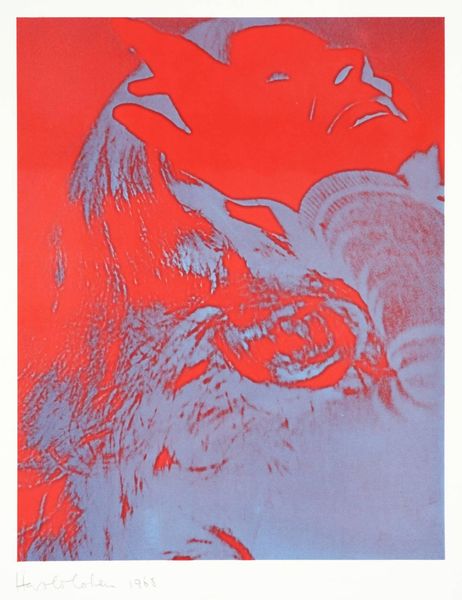
Copyright: Modern Artists: Artvee
Curator: Alright, let’s discuss Andy Warhol’s “Cow” from 1981, a screenprint which, like many of Warhol's works, straddles the line between high art and popular culture. Editor: My first impression is a strangely comforting kitsch. The color palette—that soft blue background and the brownish-orange of the cow itself—it's like a pastel dream, or perhaps a warped advertisement. Curator: That juxtaposition is classic Warhol. He was always interested in the intersection of consumerism and art, challenging what we consider worthy of artistic representation. The “Cow” series directly followed his famous soup cans and celebrity portraits. Editor: It’s the process, really. It's just a cow but think about screenprinting at the time—how mechanical and reproductive it was. He used industrial techniques to mass-produce images of cows. Was he elevating the working class's everyday life, or flattening it? Curator: I think both. He took an animal essential to the food industry—a symbol of rural, working-class America—and reproduced it on a mass scale, much like the products of that very industry. He exposes the commercialization, creating a very knowing critique. Editor: Exactly! The materiality and the context clash. There’s also an element of labor involved—the physical act of creating a screenprint, the labor that went into animal husbandry and food production – that gets lost in translation when we encounter it on a gallery wall. Curator: I'm also fascinated by the democratization of art that Warhol promoted. Through screenprinting, he made art more accessible and affordable. Everyone could own a "Cow", not just wealthy collectors. Editor: True, although ownership itself becomes another layer of consumption, doesn’t it? Still, I have to say the "Cow", despite its simplicity, provokes an interesting dialogue about value and production. Curator: Absolutely, it remains a compelling exploration into art's role in society, pushing us to confront the mundane, mass-produced aspects of our lives, and in the most colourful way imaginable. Editor: Indeed, it’s an exploration of production, consumption, and even taste, wrapped up in that undeniably eye-catching Pop aesthetic.
Comments
No comments
Be the first to comment and join the conversation on the ultimate creative platform.
